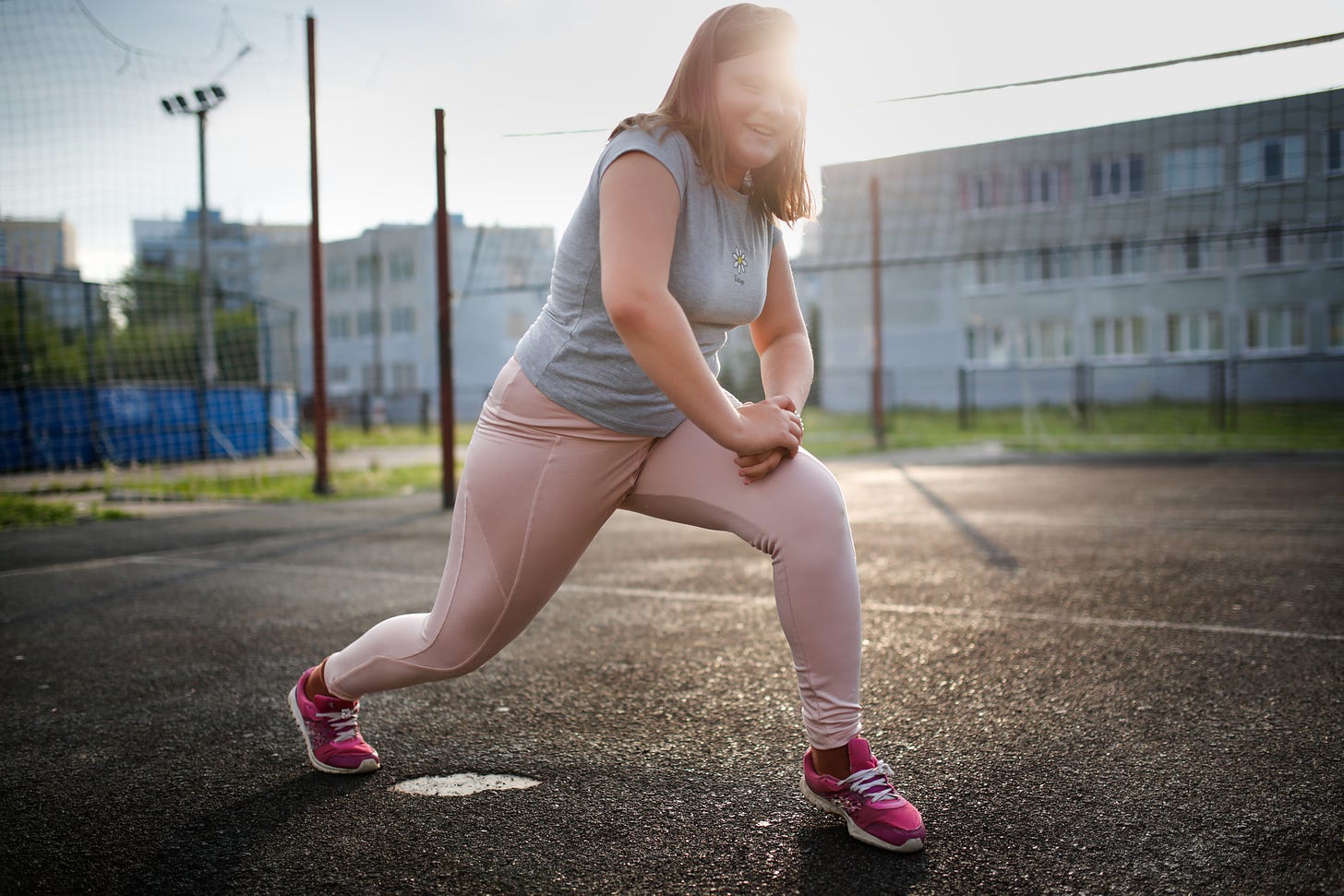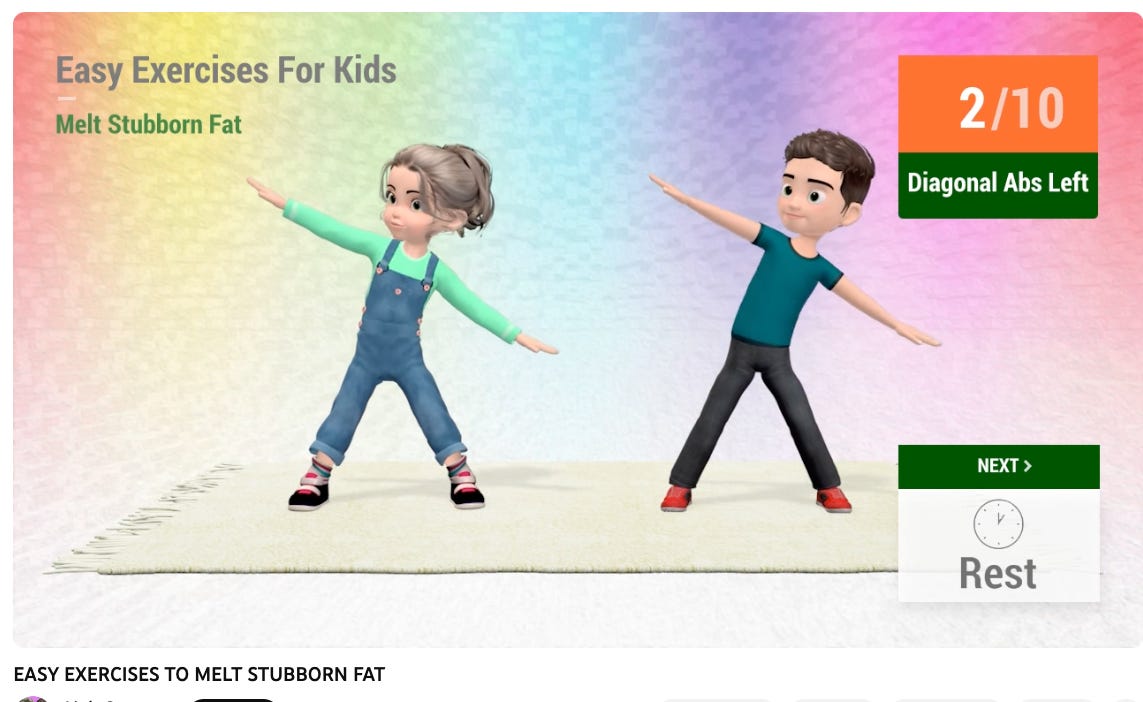Kids Don't Need a Barbie Feet Workout
But how much exercise do tweens and teens really need? And is there a non-diet way to get it?
Disclaimer: You’re reading this column because you value my input as a journalist who reports on these issues and therefore has a lot of informed opinions. I’m not a healthcare provider, and these responses are not meant to substitute for medical or therapeutic advice.
Q: My already very active 10-year-old wants to work out to lose weight. She’s in a bigger body and has been picked on a bit for her weight and for being the tallest kid in her grade. Honestly, she is shaped just like her biological mom and no amount of restriction or working out will ever make her the type of tiny she seems drawn to—she will always be a tall, curvy girl and she’s gorgeous! So how can I teach her to move for joy?
The first step here is to validate your daughter’s feelings without affirming her fear. Don’t deny her body size or her experiences. Because yes, it’s hard to be the tallest kid in your class! It’s hard to be bigger than your peers in a world that tells everyone, but especially girls, to make ourselves smaller. But that doesn’t mean that weight loss is the answer. You can explain that on a practical level, dieting and exercise doesn’t work; any weight she might lose in the short term will end up coming back. But you should also explain that when we try to lose weight to please other people, we’re actually upholding an entire system of bias and making it harder for everyone to feel safe in their bodies. You can find more resources and scripts for how to have this conversation here.
But once you’ve made it clear that working out isn’t something we should do to lose weight—and you feel confident this message is resonating with your kid1—there can still be value in helping her develop a joyful and sustainable relationship with movement. Not because exercise will change her body size, but because it can help her feel more grounded in her body, and more aware of its amazing potential to do rather than to be looked at. Physical activity can also help kids regulate and manage stress and anxiety. And it can be fun.
I’ll admit to having a vested interest in your question: Last month, my own tween had a cardiology check-up where we were encouraged to think about how to add more weight-bearing and strength-training exercise to her life. I won’t share more of her story here, but suffice to say, I trust her medical team infinitely and know that they have good, evidence-based reasons to advise this, none of which have anything to do with body size. “You might find some good kid workouts on YouTube,” one provider suggested.
So I dutifully hopped onto YouTube and searched “kid workout videos.” And friends, it was…not good. And it got worse, fast.
The first search result is a fairly boring “Get Fast” kids workout. It isn’t diet culture per se, but I do have questions about why the mom making this channel shoots her son doing basketball drills in gym shorts, and then shoots her daughter doing a very pink Barbie-inspired workout designed to give her “high heel feet.”
From there I found my way to Roberta’s Gym, which features a CGI trainer with a body that makes Barbie look human. And then to Little Sports, where CGI children demonstrate moves intended to “prevent weight gain,” “lose weight,” and “melt stubborn fat.”
Almost a million YouTube subscribers follow Little Sports; 5.7 million follow Roberta. And over 20 million follow Ninja Kidz, a channel that features kids doing impressive—but safety disclaimers required —gymnastic and parkour stunts, and leans hard into “boys versus girls” fitness challenges. Big fitness brands like FitBit and Peloton have also launched kid-focused content, and lots of adult-focused fitness influencers like Joe Wicks and Kaisa Keranen add the occasional kid video series into the mix with their usual fare. Kid Fitness Culture is officially having a moment.
It isn’t all as dark as Little Sports teaching elementary school kids to melt their belly fat. But even when these fitness instructors and models are human, they are uniformly thin, toned and able-bodied. The messaging may not explicitly promote weight loss, but kids are learning what “fit bodies” look like in our culture. And that ideal is very closely aligned with everything they are learning about what it means to be beautiful, sexually desirable, and valued by our society. This is why it’s not surprising that your 10-year-old is already thinking of “working out” as something she should do to pursue weight loss.






